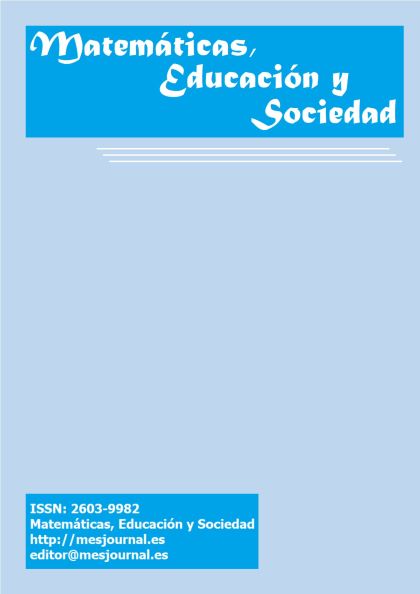Sobre los modos de pensamiento vectorial vía resolución de problemas
Contenido principal del artículo
Resumen
El propósito del presente artículo es el de mostrar a grandes rasgos lo fundamentado en la tesis doctoral del autor principal sobre los avances en la caracterización del Pensamiento Vectorial a través de la resolución de problemas en los estudiantes de ingenierías de la Universidad Antonio Nariño. En las actividades realizadas para tal fin se propuso un conjunto de problemas retadores y no rutinarios, donde salen a la luz cinco modos de pensamiento que caracterizan el Pensamiento Vectorial involucrado en los estudiantes y que se encuentran plasmados en la rúbrica para la caracterización del mismo que hace parte de los resultados de la investigación. Como contraste del aporte teórico de la tesis doctoral, y como elemento innovador del artículo, se muestra una generalización del enfoque basado en la teoría DNR propuesta por Harel (2021), donde se discuten sus llamados atajos inhibidores y catalizadores en relación a algunos conceptos propios de la asignatura.
Descargas
Detalles del artículo
Esta obra está bajo una Licencia Creative Commons Atribución 3.0 España
Citas
Arcavi, A. (2003). The role of visual representations in the teaching and learning of mathematics. Educational Studies in Mathematics, 52(3), 215–241
Donevska, A. (2016). Thinking modes, with or without technology? 13th International Congress on Mathematical Education. Hamburg.
Dorier, J. L. (1995). A general outline of the genesis of vector Space theory. Historia Matematica, 22 (3), 227-261.
Dray, T & Manogue, C. A. (1999). The vector calculus gap, PRIMUS 9, 21–28
Dray, T & Manogue, C. A. (2003). Using differentials to bridge the vector calculus gap, College Math. J. 34, 283–290
Dreyfus, T. (1991). Advanced mathematical thinking processes. In Tall, D. (Ed.), Advanced Mathematical Thinking, (pp.3-21). Dordrecht/ Boston/ London: Kluwer Academic Publishers.
Guerra, R. y Parraguez, M. (2019). Comprensión del producto vectorial desde los modos de pensamiento: El caso de profesores en formación inicial. Comunicación. XV CIAEM-IACME, Medellin, Colombia.
Harel, G. (2008 a). DNR Perspective on Mathematics Curriculum and Instruction: Focus on Proving, Part I, ZDM—The International Journal on Mathematics Education, 40, 487-500.
Harel, G. (2008 b). DNR Perspective on Mathematics Curriculum and Instruction, Part II, ZDM— The International Journal on Mathematics Education, 893-907.
Harel, G. (2021). The learning and teaching of multivariable calculus: A DNR perspective, ZDM—Mathematics Education, Springer.
Hernández, Sampieri, R., Fernández C. y Baptista L, P. (2014). Metodología de la Investigación. Sexta Edición. México: McGrawHill / Interamericana Editores S.A. de C.V.
Kline, M. (1990). Mathematical Thought from Ancient to Modern Times, Vol. 2. New Ed Edition.
Kwon, N., Bae, Y. & Oh, N. (2015). Design researchon inquiry – based multivariable calculus: Focusing on students´ argumentation and instructional design. ZDM mathematics Education, 47(6)
Marsden, J.E. and Tromba, A.J. (1991). Cálculo vectorial (3a ed.). Wilmington, Delaware: Addison-Wesley Iberoamericana, SA. Ortega, J.
Presmeg, N. C. (2006). Research on visualization in learning and teaching mathematics. In A. Gutiérrez & P. Boero (Eds.), Handbook of research on the psychology of mathematics education: Past, present and future (pp. 205-235). Rotterdam, The Netherlands: Sense Publishers.
Sierpinska, A. (2000). On some aspects of students´ thinking in Linear Algebra. En Dorier, J.L. (Eds.), The teaching of Linear Algebra in question (pp. 209-246). Netherlands: Kluwer Academic Publishers.
Stewart, J. (2018). Calculus of several variables. Early Transcendents. Seventh edition. Brooks-Cole/Cengage Learning.
Tait, G. P. (1873). Elementary Treatise on Quaternions. País: Oxford.
Tall, D. (1990). Inconsistencies in the learning of calculus and analysis. Focus 12 (3 y 4), 49-63
Tall, D. (2013). How Humans Learn to Think Mathematically. Cambridge.
Thompson. S. P. (1914). Calculus Made Easy: Being a Very-Simplest Introduction to Those Beautiful Methods of Reckoning which Are Generally Called by the Terrifying Names of the Differential Calculus and the Integral Calculus. New York: MacMillan Company, 2nd Ed.)
Thompson, P.W & Carlson, M.P (2017). Variation, covariation and functions: fundamental ways of thinking mathematically. In J. Cai (Ed.), Compendium for research in mathematics education (pp. 421-456). Reston, VA: National Council of Teachers of Mathematics.

